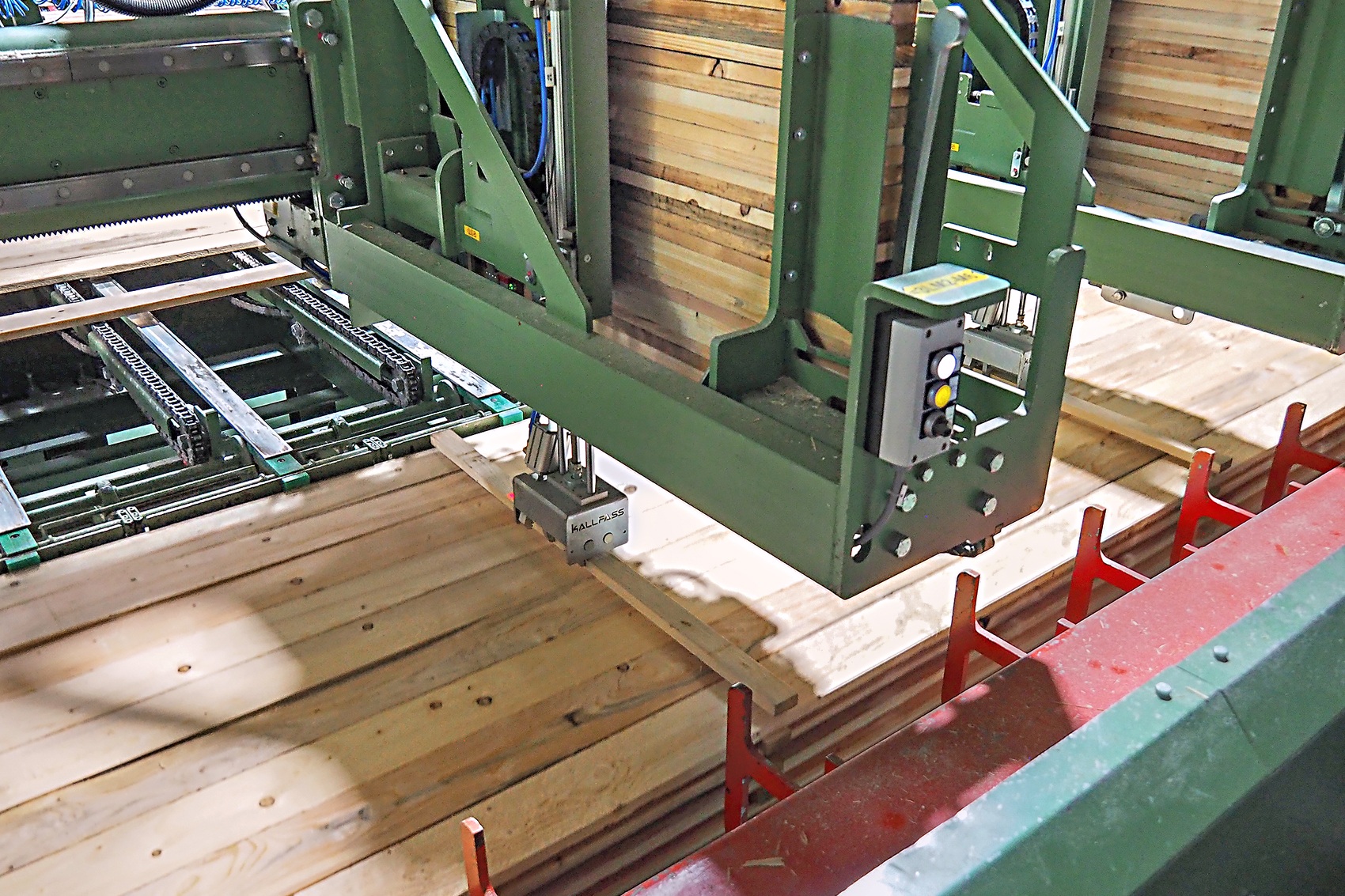The previous stacking system at Holzwerke van Roje was already approaching the end of its useful life. For this reason, the decision was made to rebuild, which was primarily aimed at increasing efficiency in the new CLT plant, explains Gerhard Hauschulte, Managing Director at van Roje.
Holzwerke van Roje, Oberhonnefeld-Gierend, Germany, originally focused on rather small batch sizes with its sawmill and primarily serves niche markets with its products. In the past year, however, something has changed significantly: When the company's CLT plant is up and running, around 25 to 30% of the sawn timber produced in the sawmill is sent for further processing. “Many of our investments in recent years have been aimed at further increasing profitability in production. The new stacking line is also part of this”, explains Gerhard Hauschulte, Managing Director at Holzwerke van Roje and adds: “Now that we have the new stacking line, we can get more out of the side products”. When it comes to the implementation, Holzwerke van Roje relied on the expertise of Kallfass, Baiersbronn-Klosterreichenbach, Germany. “We have already worked with Kallfass many times, for example in the planing mill. We were always fully satisfied. Moreover, Kallfass offers solid mechanical engineering”, Hauschulte justifies and says with a smile: "Besides, Kallfass had a building time frame that we had to use”.
The schedule was very demanding and the machine builder completed the conversion at the turn of 2022/23: Dismantling of the existing system, installation of the new one and commissioning were completed in less than three weeks.
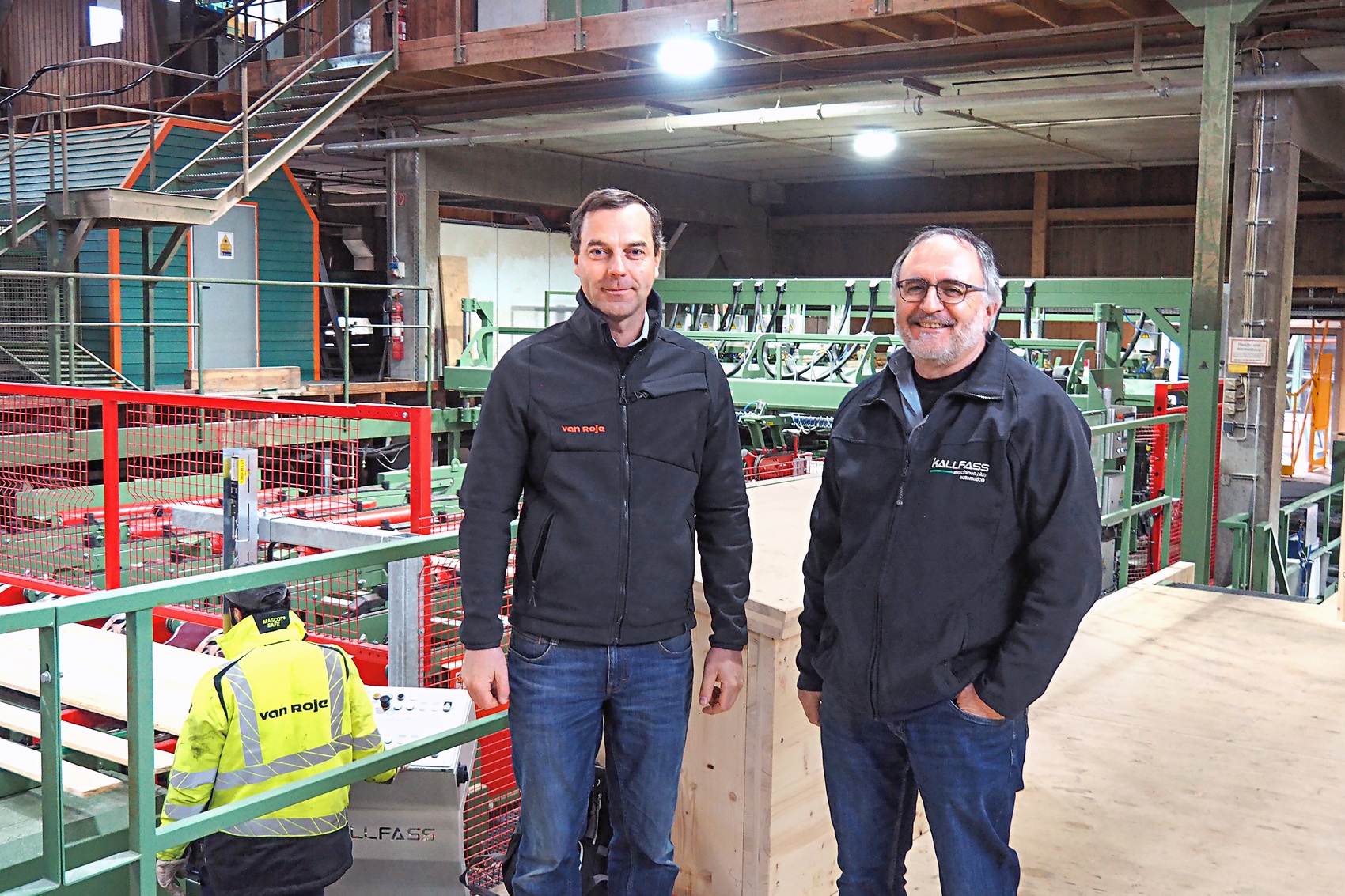
Holzwerke van Roje Managing Director Gerhard Hauschulte and Kallfass Managing Director Hans Haist (left to right) in front of the new stacking line.
More yield with “Scandinavian stacking”
The new stacking line from Kallfass makes it possible to form sawn timber packages with different lengths and stack them flush right/left. In the CLT plant, the boards are placed in a finger-jointing line. This means that the length of the raw material is not important. If short boards with different lengths can be cut and stacked without a grid, which we previously had to cut back to fixed dimensions, we can significantly increase our yield”, Hauschulte informs right in advance about the advantages of the new system. “In the German-speaking countries, such packages with Scandinavian stacking have been rather uncommon so far. But we have already installed several such plants in export markets”, reports Hans Haist, Managing Director at Kallfass.
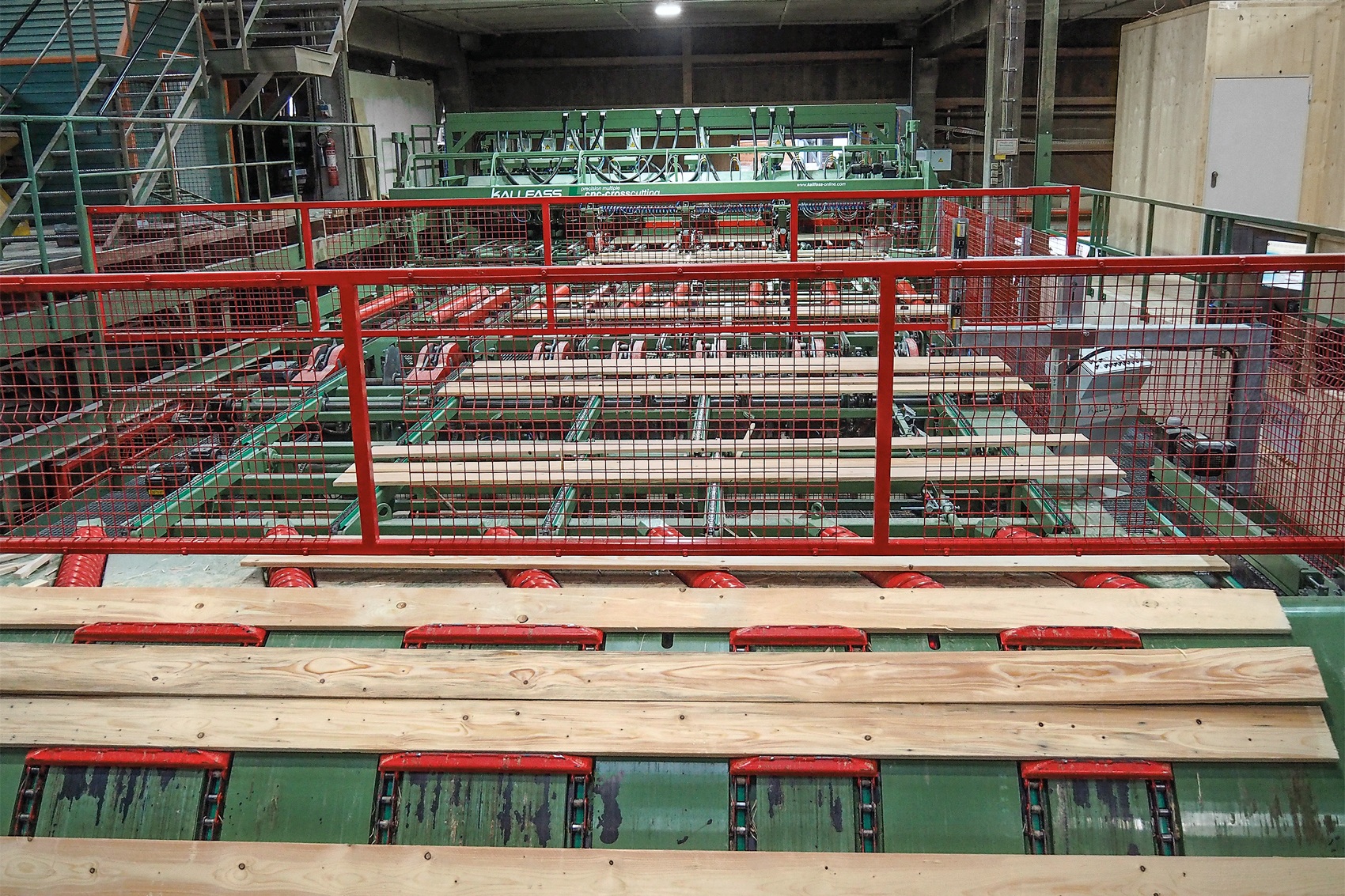
Kallfass delivered a new stacking line to Holzwerke van Roje at the turn of the year 2022/23.
Kallfass supplied the new stacking line starting from the separation and alignment unit of the side goods downstream of the box emptying unit. The boards are first transported past the employee, who can still eject timbers that are not acceptable. A Tongloader® cycles the workpieces in the direction of the next cross conveyor at a rate of up to 80 cycles per minute. If Scandinavian packs are formed, the zero edge is shifted every second board thereafter. The system is designed for a board length of 2.5 to 6.1 m. “If we require shorter dimensions, there are end stops at 3.6 and 4.6 m when shifting the zero edge”, Hauschulte points out during the tour. "The alignment for the Scandinavian packages can be deactivated so that completely “normal” stacks can also be formed”, adds Haist.
The subsequent multiple cross-cut saw from Kallfass is equipped with two sawing aggregates for zero and end cutting. Following the layer formation and transfer, the stacking system is installed. This system outputs up to ten layers per minute and is matched to the edging system. The stacker has nine stick magazines for automatic stick placement process. For workpieces up to 6.1 m in length, all stick magazines are used to stabilise the package in the best possible way. For workpieces of shorter lengths, fewer stick magazines are used. “We haven't had any problems with stability so far”, Hauschulte confirms. "We have also already made preparations for an automatic stick placement using a robot”, Haist emphasises.
Hauschulte is very satisfied with the process and the investment decision: “We can now generate more yield and we want to continue to add value in the future”.
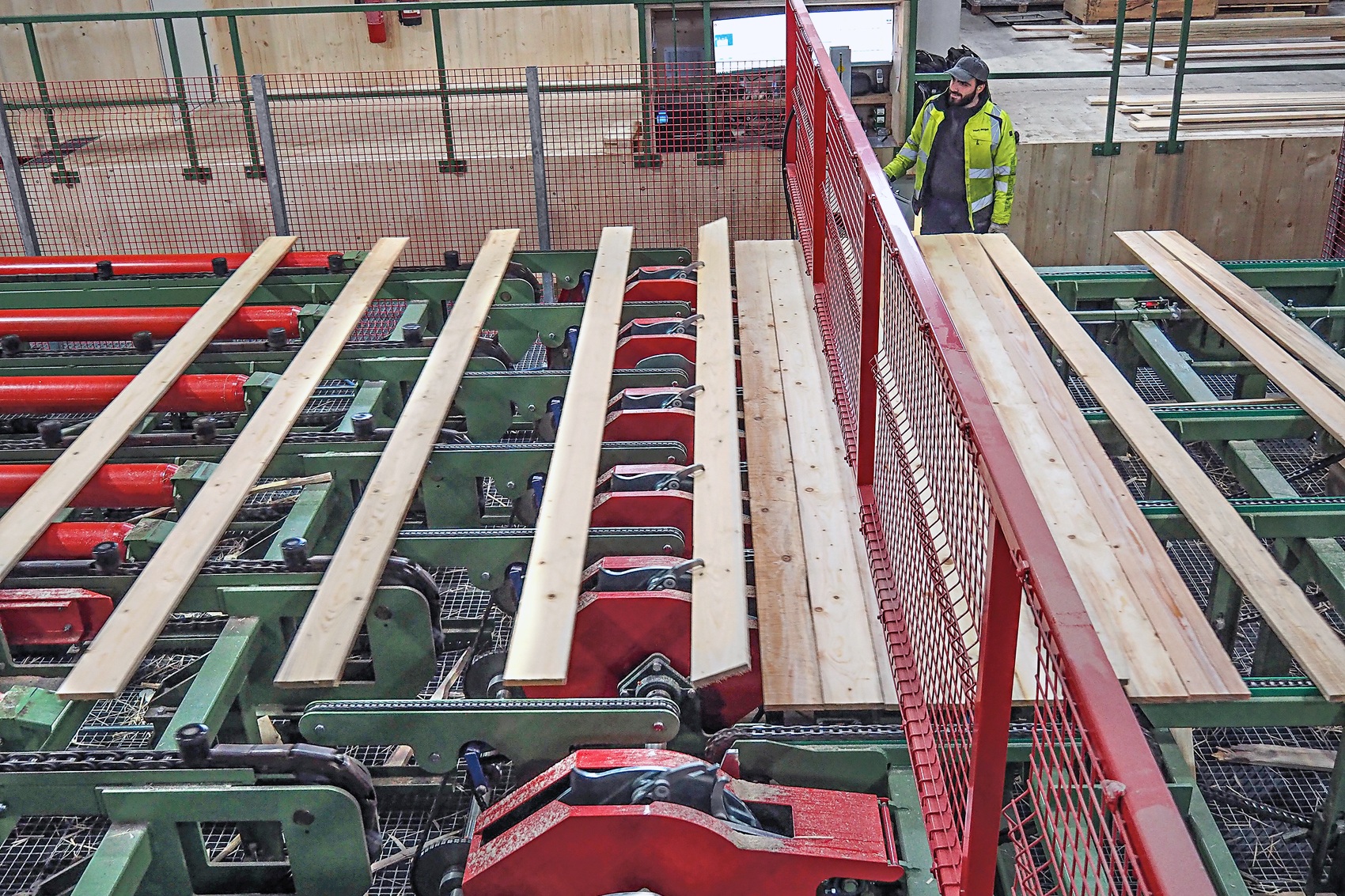
After emptying the boxes and unscrambling the workpieces, the Tongloader® cycles the boards in the direction of the multiple cross-cut saw.
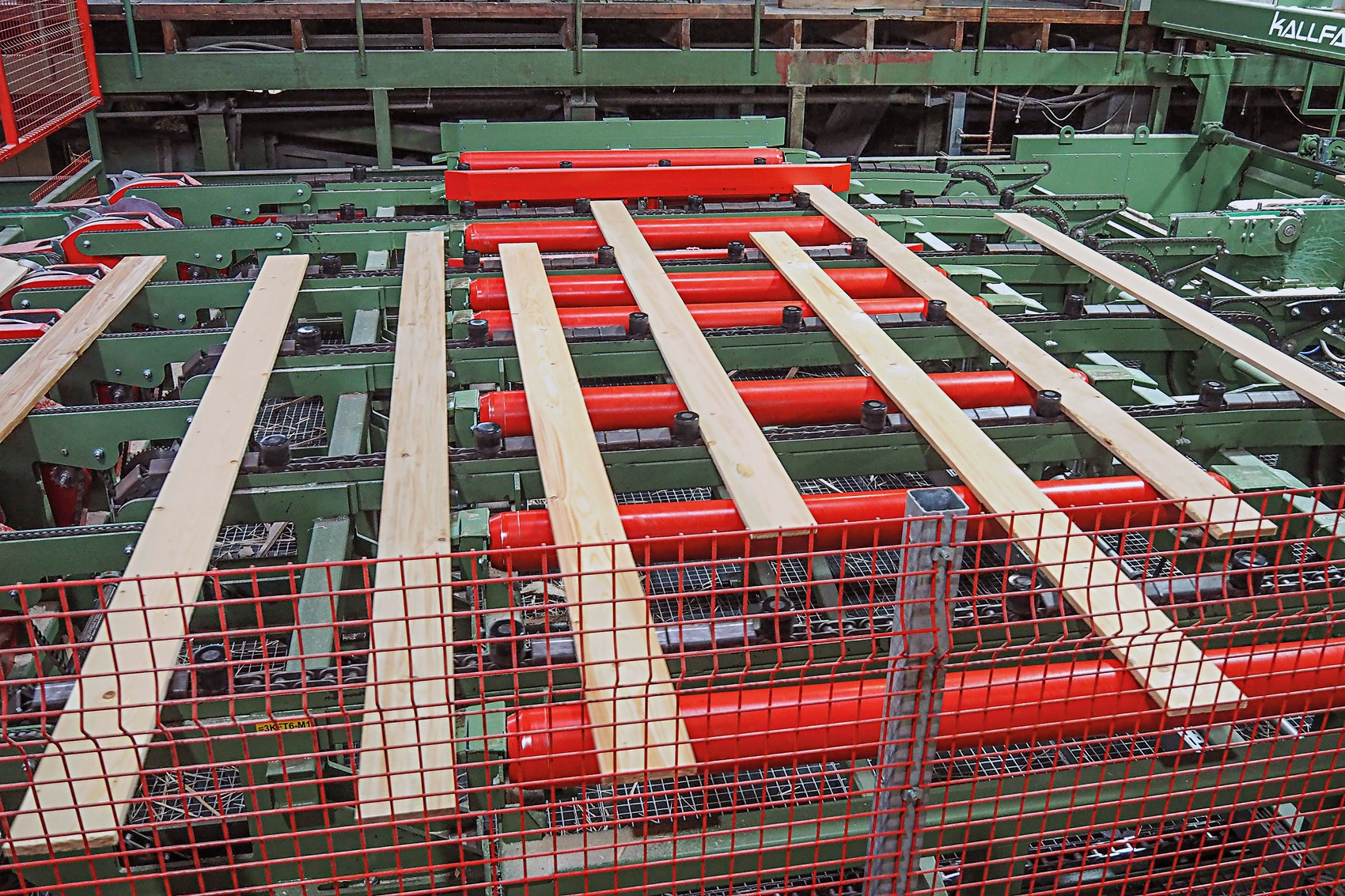
This is followed by another Kallfass innovation: the shift of the zero line for Scandinavian packages.
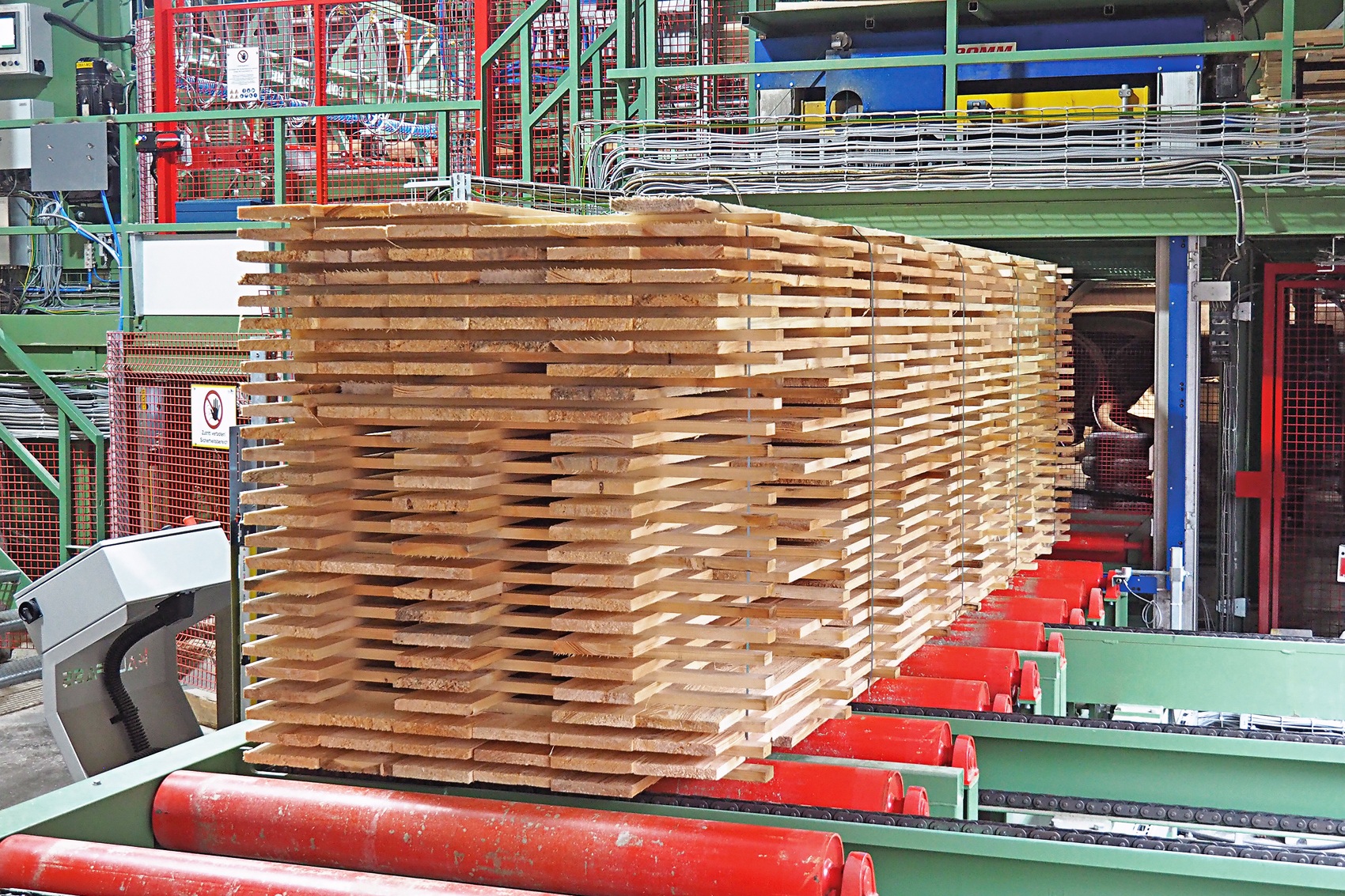
The Kallfass stacking system enables the formation of Scandinavian packages – the different lengths allow the yield in the CLT plant to be increased.
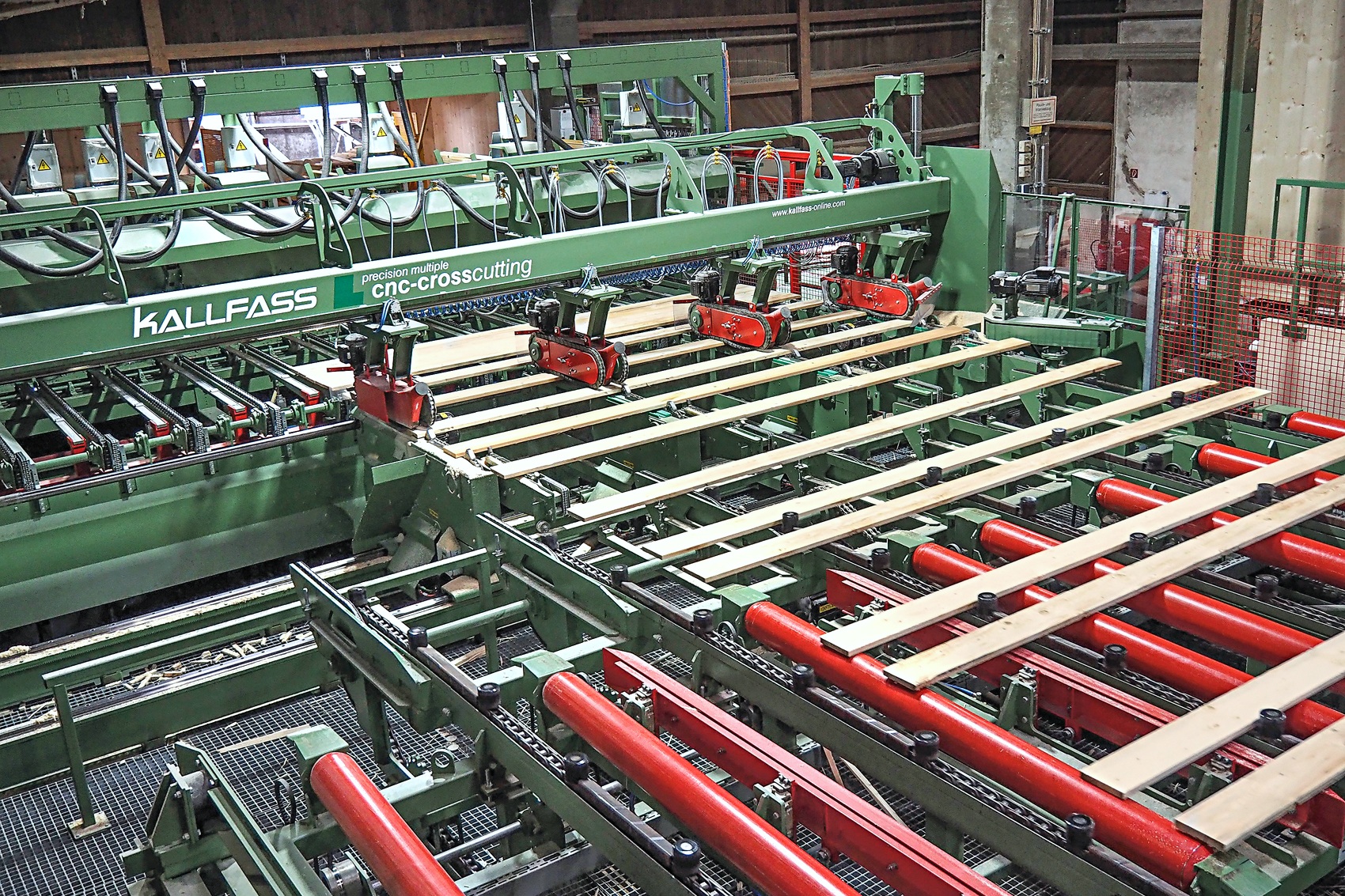
The multiple cross-cut saw at Holzwerke van Roje and supplied by Kallfass is equipped with a total of two saw aggregates.
